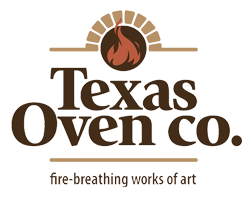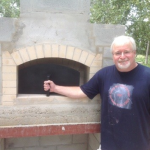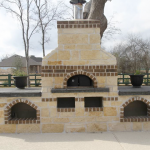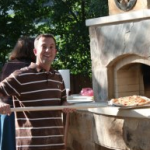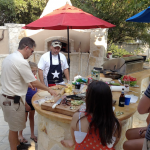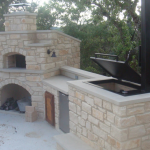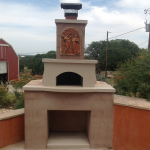Roasting turkey in a wood-fired oven
At this time of year, thoughts turn to roasting turkey, dressing, potatoes, cranberries and pumpkin pie. The photo of a beautifully roasted turkey, brings memories of Thanksgiving and all that is traditionally attached to this holiday. We have much for which to be thankful today, and I do hope our friends, those of you who follow our blog, enjoy the pleasures joined to this season and to the hearth.
Roasting turkey trials
Back when it was still 90° here, I started working on our Thanksgiving blog. What’s not to love about an extra Thanksgiving dinner? I roasted a locally raised 18 pound turkey in our wood-fired oven and chose to test butterflying the turkey for high-temperature roasting.
In the past, I have roasted turkey intact. Both techniques produce delicious, moist turkey. However, the high-heat-butterflied method had three benefits. First, roasting turkey butterflied reduces the overall cooking time dramatically. Second, it closes the gap between dark meat and white meat cooking times. Finally, it makes roasting turkey in a wood-fired oven easier.
Brining, butterflying and high heat
I found several recipes on-line for roasting turkey in a wood-burning oven, and I aimed for the same oven temperature, about 500°. 400°-500° is a typical “roasting zone” temperature as described in The Art of Wood-fired Cooking. Most high temperature recipes for roasting a turkey in a wood-burning oven have you build a fire, let the oven accumulate some heat and maintain a small fire while roasting the turkey.
The night before roasting the turkey, I brined the bird in a solution of salt, water, onion and cloves. I made a double batch of Steven Raichlen’s brine from this New York Times article. The turkey spent the night submerged in a cooler of brine.
The next day I started a fire, dried off the turkey and cut out the backbone. This could be a blog in itself. You need a sharp knife or heavy-duty poultry shears (plus some strength and patience). Once the backbone was out, it was easy to spread the bird across a grate in my roasting pan. I rubbed herbed butter under the skin of the turkey and we were ready to roast.
Foiled by enthusiasm
I pushed the established fire back, and slid the turkey into a roasting zone at the front of my oven.
In my enthusiasm, I forgot about one of the wood-burning oven’s greatest assets: radiant heat from all sides. The vaulted dome is as hot as the oven floor and radiates beautiful, even heat. For roasting a turkey, that means you initially want to tent the bird to protect it from browning too quickly.
Trust me, it is easier to tent it before the pan is 500°. After tenting the bird, I slid it back into the oven.
Door on or door off?
I have tried roasting turkey with a small fire and an open door and with the accumulated heat in a closed oven. Both methods work whether cooking turkey alone or with all the fixin’s. This time, I did a little bit of both and left the door open toward the end as I tested temperatures more frequently and removed the foil tent.
Final thoughts
In slightly over an hour the turkey was done and beautifully browned with a just the right amount of char. After letting the turkey rest, it sliced beautifully, was moist, juicy, and needed no additional salt. The family and friends who volunteered for an extra Thanksgiving and agreed to taste test, raved about the flavor and juiciness.
Roasting turkey outside in a wood-burning oven is fun and rewarding. Butterflying the bird makes it easier to manage and works well with the wood-fired oven’s faster cooking time.
